- Home
- >
- Preservation Archaeology Blog
- >
- Return to Cove, Arizona
(November 26, 2024)—I was thrilled to return to Cove and Red Valley, Arizona, with Ben Pelletier, Caitlynn Mayhew, and Rose Mayhew (Caitlynn’s mother). Rose graciously showed us around some of her family’s important places. The trip, which was full of nostalgia for me, took place on Saturday, October 26.
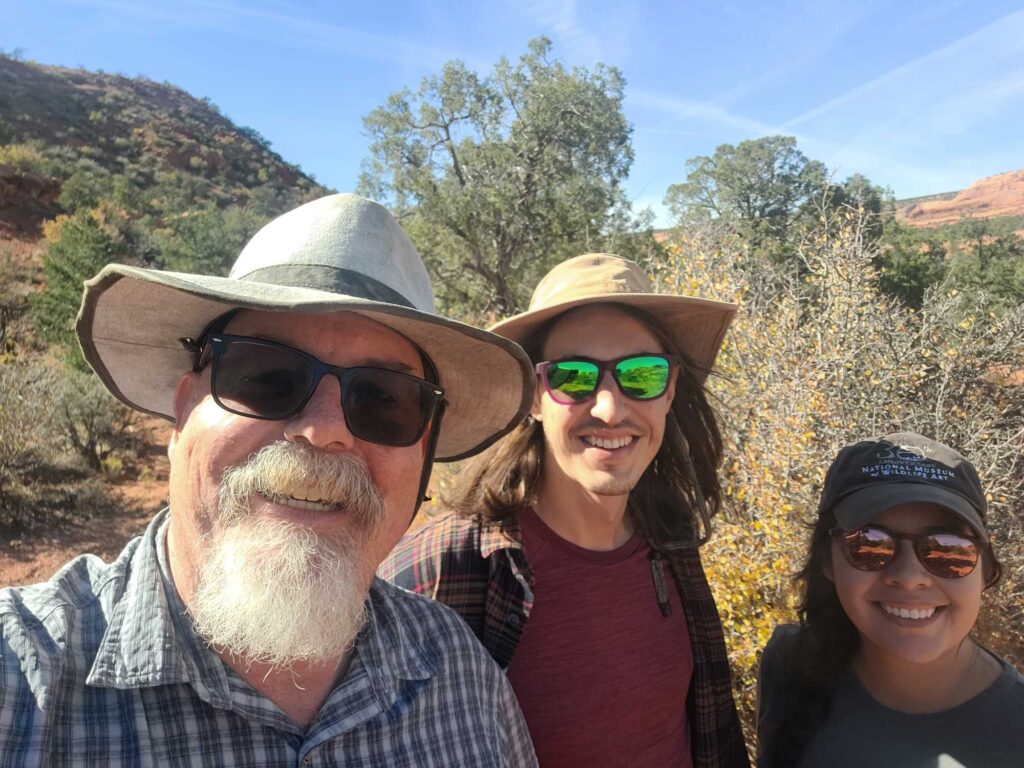
While finishing my Master’s degree in anthropology/archaeology in the late 1980s, I began working for the Navajo Nation Archaeology Department (NNAD) based in Farmington, New Mexico. I continued there until mid-2001, assisting with, managing, and completing many projects. My last years with NNAD were focused on archaeological investigations before road construction across the northern Navajo Nation. This work was very rewarding, and it was gratifying to see how happy local residents were to finally be driving, walking, cycling, and even traveling on horseback away from the mud, dust, and snow!
One of the road projects I directed took place along the N33 road, which runs from Red Valley, Arizona, west into the community of Cove, Arizona. This project unfolded between 1993 and 1999, producing a series of reports produced a final publication in 1999: Anasazi Community Development in Redrock Valley: Archaeological Excavations along the N33 Road in Apache County, Arizona, Navajo Nation Papers in Anthropology 33.
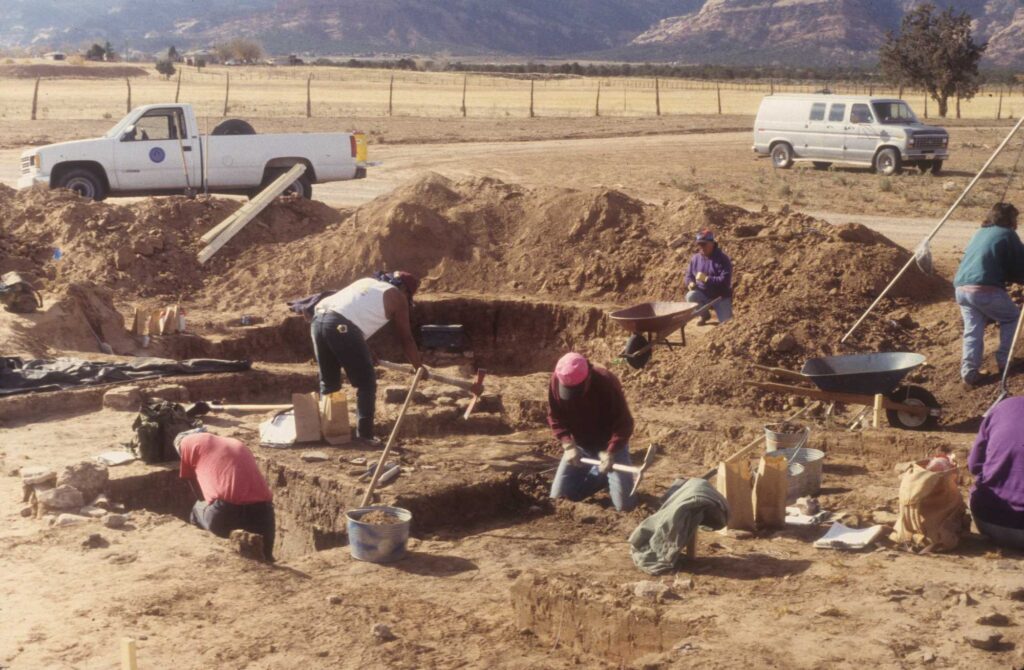
On that project, we hired many local Diné folks. A majority of our field crews lived in the area. We also conducted an ethnographic study that culminated in more than 50 interviews with Navajo leaders from Cove and Red Valley chapters, hatááłii (medicine leaders), and local people who relied on the landscape for many purposes.
The idea of a field trip to Cove came about in conversation with Archaeology Southwest’s Native American Fellow Caitlynn Mayhew. Caitlynn started with us in summer 2023; her thoughts are below. I was thrilled in talking with Caitlynn to learn that she had gone to the same Farmington schools that my son Sean had—and that they knew each other! Ben Pelletier, Preservation Archaeologist based in Aztec, New Mexico, also went on our trip; his comments also follow below.
As we drove into New Mexico’s beautiful Redrock Valley and continued west down the N33 road, I was flooded with memories. Working in this area was amazing for me, and even 30 years on, much of what I learned in the area is still with me.
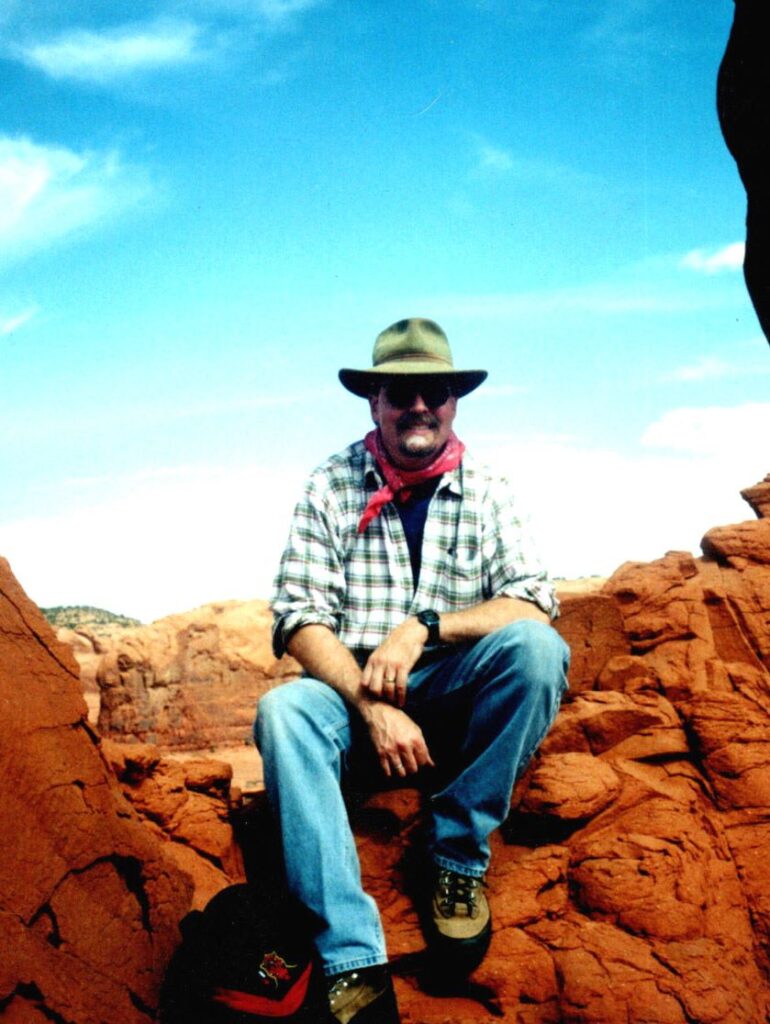
We went quite aways up the road to the John family summer camp, but recent rains had washed out several sections and we were not able to drive up near the top of mountain. Nonetheless, it was wonderful to park, hike around, and hear Rose talk about how she grew up herding sheep in the mountains.
Later, we drove past a formation commonly known as Prayer Rock in English. Nearly a century ago, archaeologist Earl Morris investigated a series of Basketmaker-era caves and shelters in this area, helping shed light on a significant period in Pueblo history. These sites are vigilantly protected by local residents, and outside entry is prohibited by the Navajo Nation.
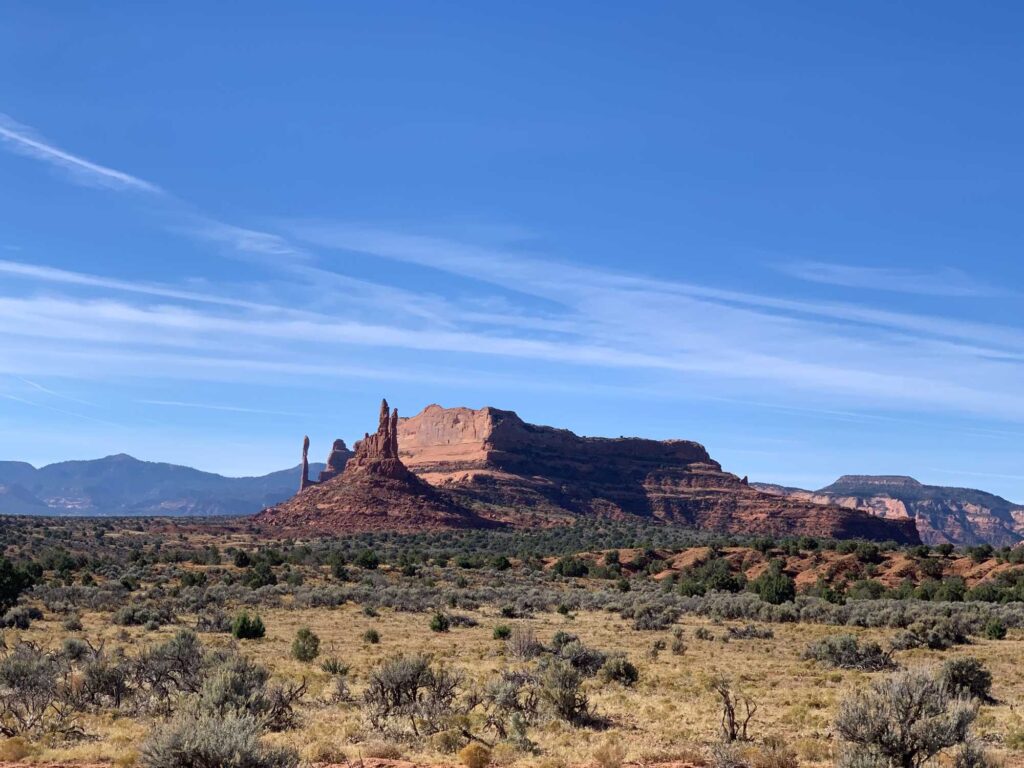
As we hiked in the area below a couple rock shelters, we encountered a couple Navajo sites from the last century or so. I thought about a site I’d come across decades ago that is among the earliest Diné sites in Cove. It was a single hogan dwelling, with Gobernador Polychrome ceramics on the ground, indicating use for a few years in the interval from the late 1600s to the mid-1700s. I imagine this site was created by some of the first Diné folks to navigate this rugged landscape.
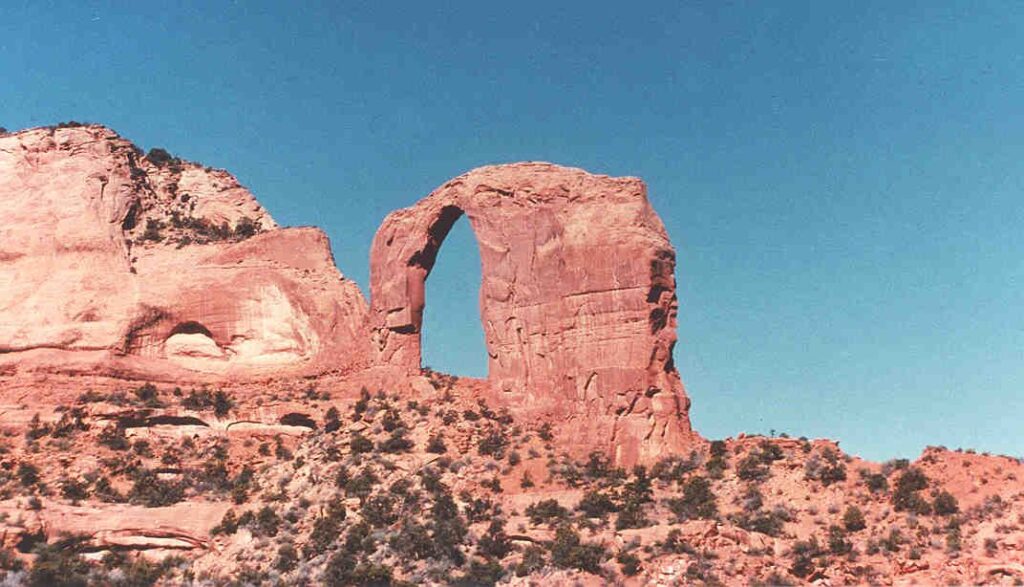
In the afternoon, we visited several ancient Pueblo site locales I’d documented 30 years ago. A large Pueblo community thrived in the Cove area from about 600 to 1200 CE. This community ebbed and flowed over time, and residents created hundreds of archaeological and cultural sites. Our NNAD work identified Cove (and the Redrock Valley) as one of the most important Pueblo centers in this part of the region over time.
As we drove away, I felt happy to have reconnected with such an incredible place! I was reminded why Cove and Redrock Valley are my very favorite places in northeastern Arizona.
Caitlynn
For some, home is where the heart is, and for me, my heart remains in K’aabiizhii Nasdlah (Cove, Arizona). My home is a land of rich red earth, azure sky, and natural features so ethereal and magnificent that it feels like you’ve stepped into another world and time. This is the land of my mother, her mother, and countless matriarchs before her. There is a profound history and connection to the land of my ancestors, and I’m grateful to those who share the same respect and admiration for it. Imagine my surprise and delight to discover that my colleague Paul is one of these people!
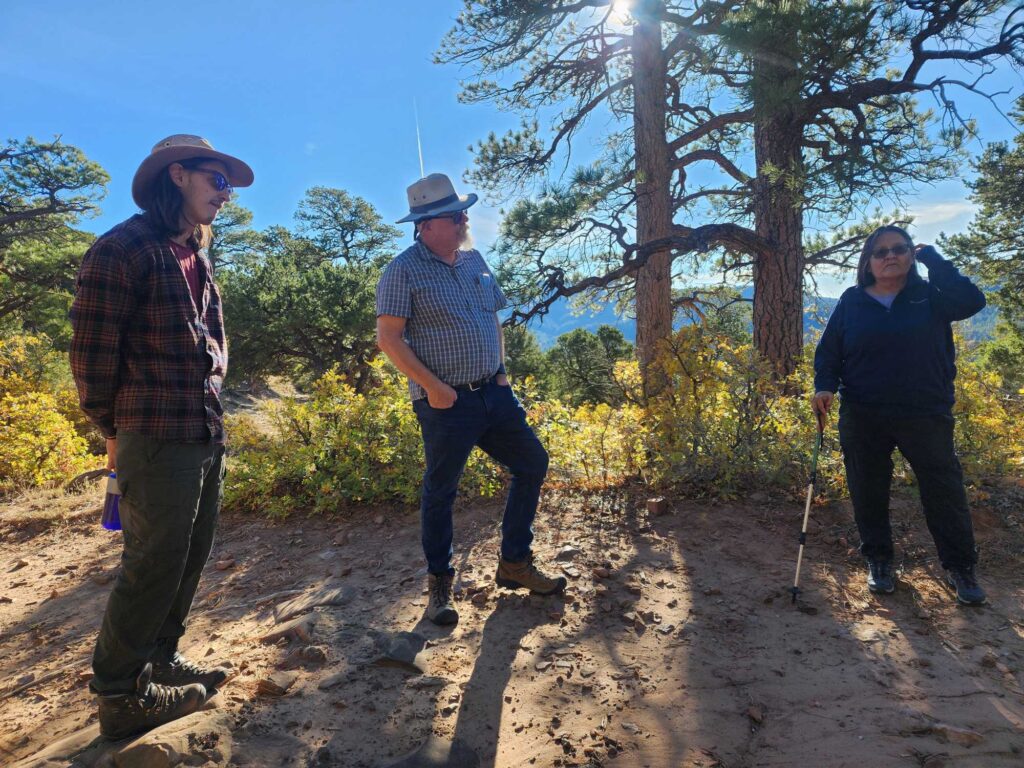
It was a small-world moment to learn of Paul’s connection to the Four Corners region, specifically to K’aabiizhii Nasdlah from his time working for the Navajo Nation Archaeology Department. It’s now funny to think N33, the road from Red Valley to K’aabiizhii Nasdlah, a route I’ve traveled so often I could probably drive it blindfolded, would be a connection to Paul’s work. So, after a few months of planning, it was time to take Paul and our colleague Ben Pelletier back down N33.
My most sincere appreciation goes to Shimá, Rose Mayhew, for taking in a few archaeologists for the day and showing them around our homeland. Seeing her humor and memories resurface—as if the land was returning her to the days when she roamed, searching for our family’s sheep—was a joy.
(Honorable mention to my family’s 2010 Ford Escape for holding it together on the switchbacks of the mountains and the washout roads in the valley!)
I look forward to hearing about Paul and Ben’s experiences on the trip, and I hope we can continue this series with another trip in the spring.
Ben
The four of us began to plan this trip after Caitlynn suggested we visit the Cove area with her mother, Rose Mayhew. Rose and Caitlynn have deep family connections there. I recently relocated to Aztec this last year for my position in New Mexico with Archaeology Southwest, and I felt grateful to get out on the landscape with folks who have much deeper roots in the region and know its history far better than me.
We met at the Shiprock Bashas’ grocery on Saturday morning. Even at the early hour, the air was already warm. We took off down a dirt road heading up into the mountains. We bounced down the road in Rose’s Ford Explorer as she angled us through corners and over large rocks. She talked about the history of uranium mining in Arizona and New Mexico, which started in the 1950s and continued into the late 1960s. The view from the top of the road was incredible, with Mitten Rock (Tséłkǫ in Diné) and the other volcanic domes erupting from the valley floor below.
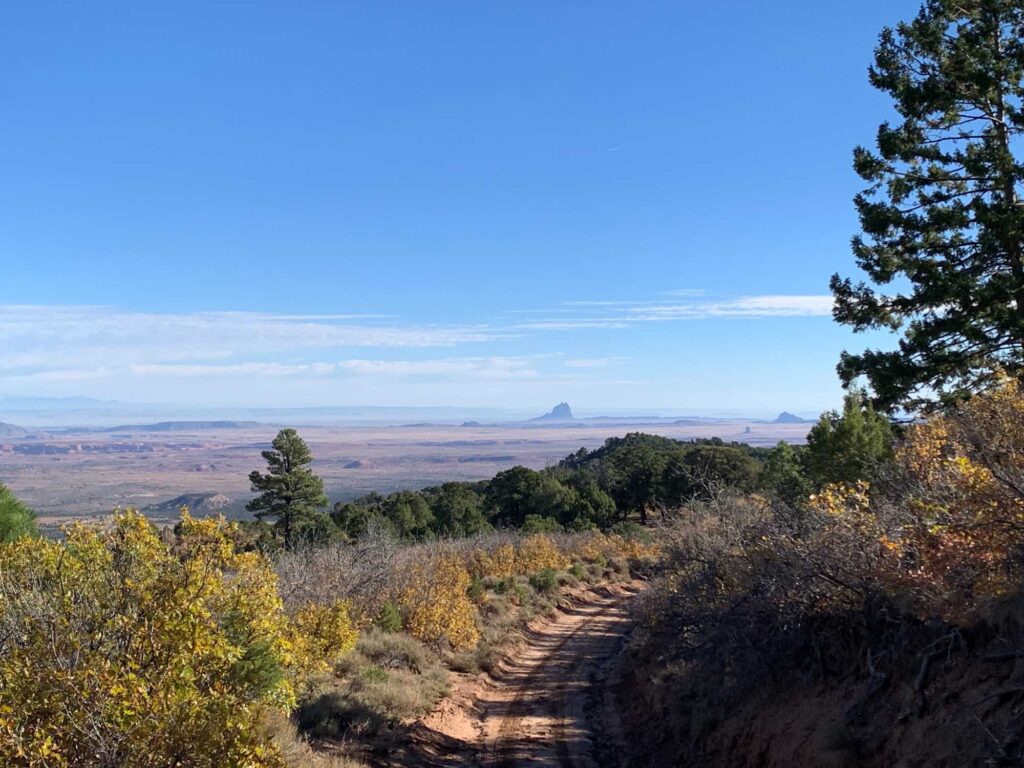
Cove and parts of the Carrizo Mountains were the first places where uranium was found on the Navajo Nation, in 1948. The mines were located in the mountains above the town, targeting a geological layer uplifted there. She talked about how when the mining was much more active in the Lukachukai Mountains, people lived up on the mountainside.
As we climbed, she pointed out home locations, all cleared pads all along the roadway. Each pad was large enough for a small house or tent, but no construction materials remained. Several contractors were working along the road as part of the ongoing remediation effort. They seemed mildly annoyed that we picked today to drive into the mountains, but they let us pass the heavy equipment and continue up the road.
After the mines closed in the late 1960s, there was no immediate effort to clean up the radioactive tailings or to treat lung conditions associated with radon exposure. Since then, the contaminated rock has affected the runoff and groundwater, including springs and wells in the area. The Navajo Nation government conducted removal action at an ore-transfer site location between July 2003 and July 2004, but the federal government was much slower to take action. Cleanup by the Environmental Protection Agency began in 2014 after a class action lawsuit, although the lawsuit names only a single company and only includes remediation for 24 of the 50 uranium mines in the Cove area.
Eventually, the road began to narrow and Rose turned the Explorer around at a switchback before the little dirt road became too tight to turn around. We continued back again through Cove while Paul and Rose discussed landmarks we passed along the way and mutual friends from the area. Caitlynn remarked that a large sandstone fin ridge looked like an alligator. It even has a blue gleaming eye at a natural arch in the stone!
“Our family hosted the [Cove] rodeo for a while,” Rose noted casually. She explained that after the Red Rock Trading Post stopped sponsoring the rodeo, her family continued to hold it for several more years. It was wild to imagine what a rodeo scene might look like in Cove/Red Rock Valley at sunset!
I asked Rose about their family’s herd. She pointed out where the family takes their sheep in the summer, their summer sheep camp, just over the ridge of the Lukachukais. She talked about how her family would sell rugs to the nearby trading post. She also pointed out where her mother grew up, north of Cove, and talked about what life was like for her growing up there. Rose showed us where her mother walked to get water and where her mother’s family kept their sheep.
As we headed up a large wash, Rose pointed out a large culvert where there was once a bridge. She explained that it had washed out about 10 years ago in a large flood. Today the road cuts directly through the bottom of the dry wash. As we moved up the wash, we saw a spring emerging from the slickrock wash bottom, bringing a small trickle of water. Just above the largest seep, we spotted a small Navajo structure across the wash, up on the bank.
On our way back to Bashas’, I thought about how fortunate I was to have learned more about the Cove and Red Rock area from Rose, Caitlynn, and Paul, who all have different types of knowledge about the region. Connection to place is important, and for me, there is no better way to learn than a day out hiking with people who all have deep and diverse connections to the same land.
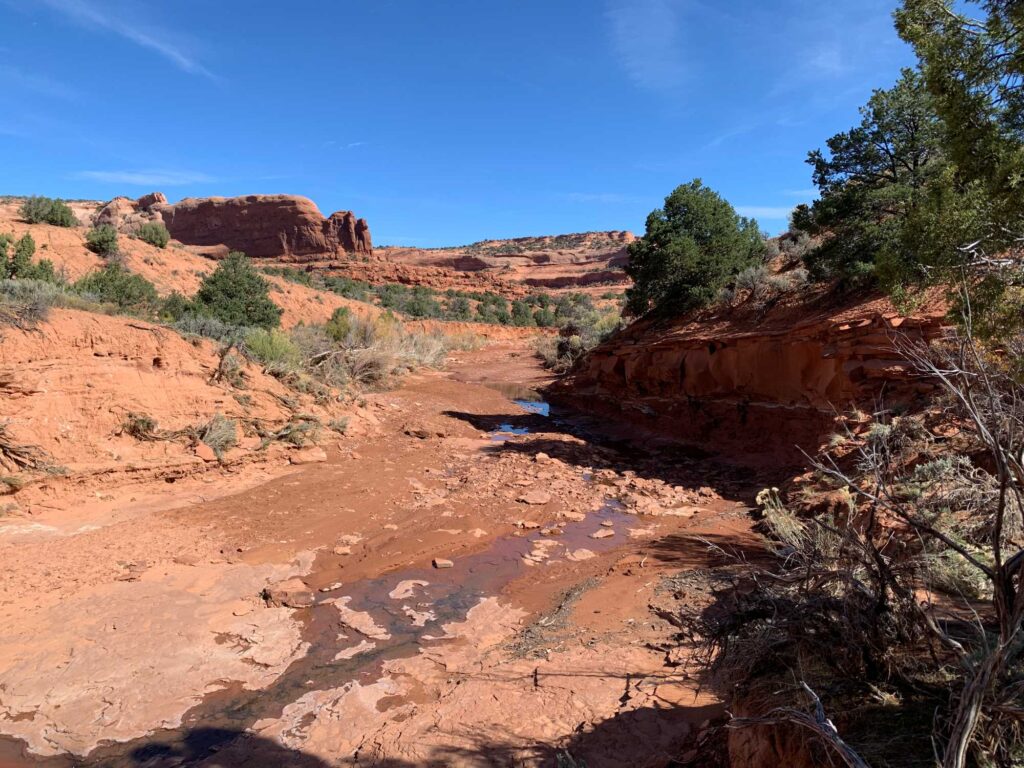
Explore the News
-
Join Today
Keep up with the latest discoveries in southwestern archaeology. Join today, and receive Archaeology Southwest Magazine, among other member benefits.